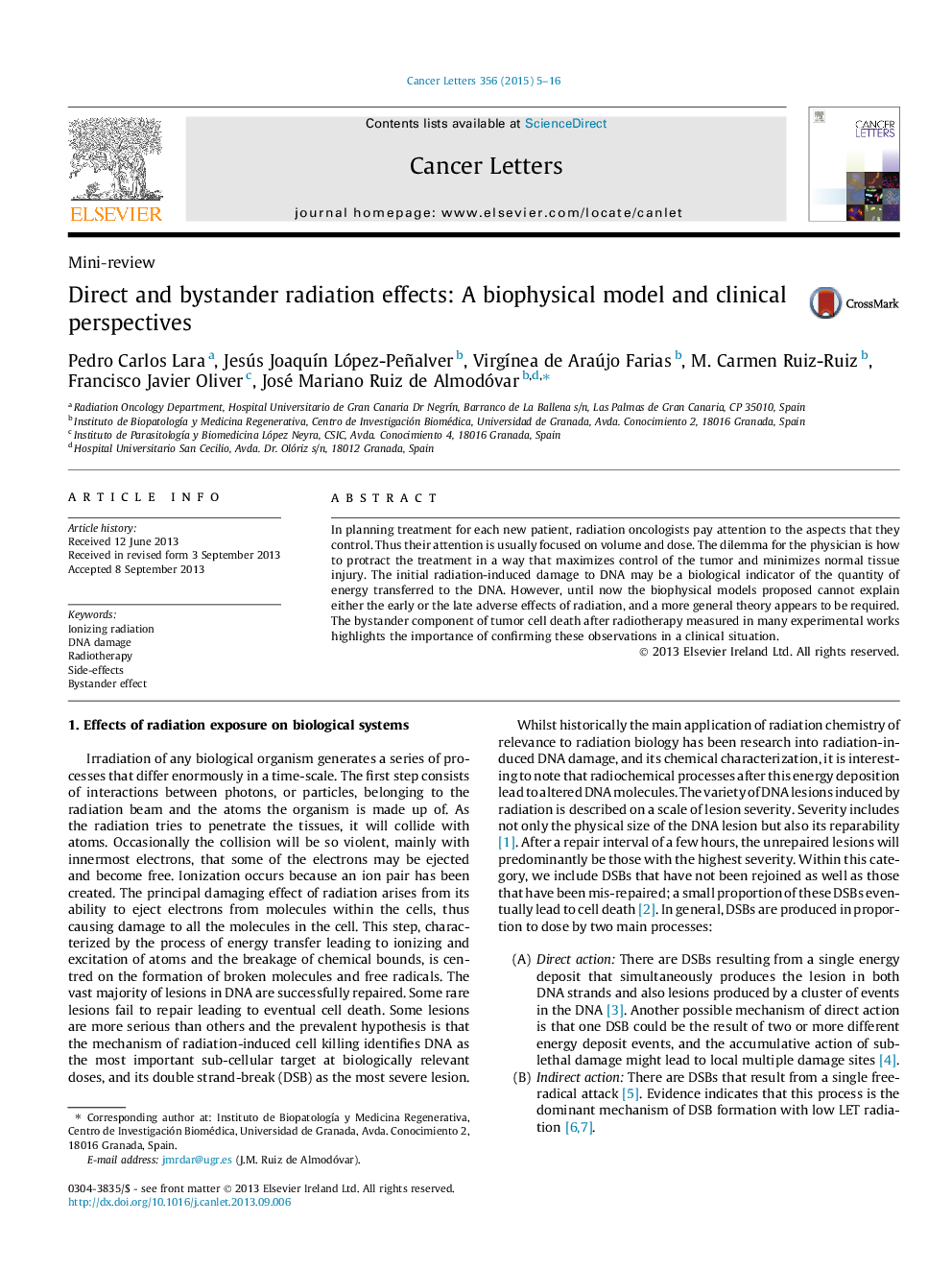| Article ID | Journal | Published Year | Pages | File Type |
|---|---|---|---|---|
| 2112538 | Cancer Letters | 2015 | 12 Pages |
•The reaction of the cell to DNA damage is to activate DNA repair processes to remove the lesions.•To be able to predict normal tissue response would have important implications in radiotherapy.•Non-targeted action could be considered as the immunological response to stress induced by radiation.•Radiotherapy may not only be a successful local and regional treatment but also a systemic cancer therapy.
In planning treatment for each new patient, radiation oncologists pay attention to the aspects that they control. Thus their attention is usually focused on volume and dose. The dilemma for the physician is how to protract the treatment in a way that maximizes control of the tumor and minimizes normal tissue injury. The initial radiation-induced damage to DNA may be a biological indicator of the quantity of energy transferred to the DNA. However, until now the biophysical models proposed cannot explain either the early or the late adverse effects of radiation, and a more general theory appears to be required. The bystander component of tumor cell death after radiotherapy measured in many experimental works highlights the importance of confirming these observations in a clinical situation.
